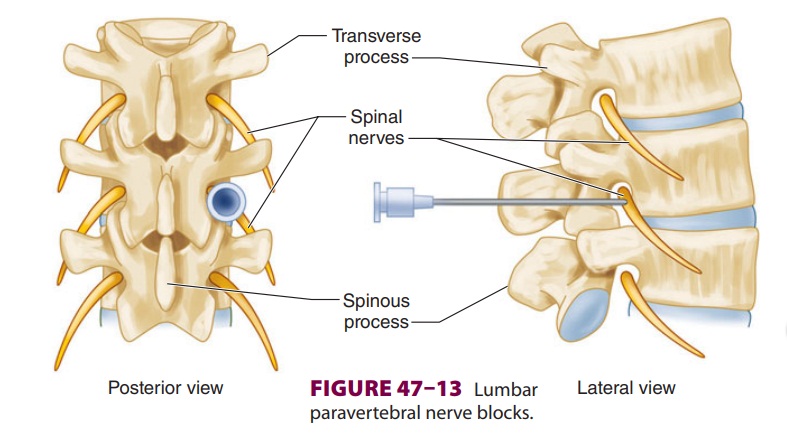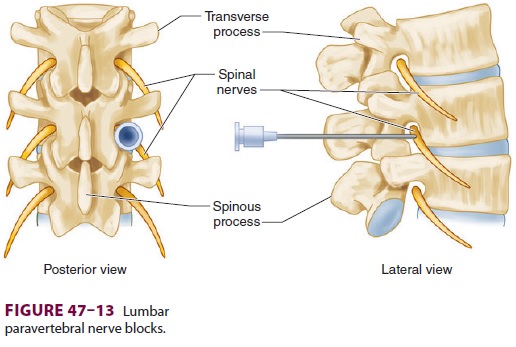Chapter: Clinical Anesthesiology: Regional Anesthesia & Pain Management: Chronic Pain Management
Lumbar Paravertebral Nerve Blocks

Lumbar Paravertebral Nerve Blocks
A. Indications
Lumbar paravertebral nerve blocks may be useful in evaluating pain due
to disorders involving the lum-bar spine or spinal nerves.
B. Anatomy
The lumbar spinal nerves enter the psoas compart-ment as soon as they
exit through the intervertebral foramina beneath the pedicles and transverse
pro-cesses. This compartment is formed by the psoas fascia anteriorly, the
quadratus lumborum fascia posteriorly, and the vertebral bodies medially.
C. Technique
The approach to lumbar spinal nerves is
essentially the same as for thoracic paravertebral blockade (Figure
47–13). An 8-cm 22-gauge needle is usually used.
Radiographic confirmation of the correct level is helpful. For diagnostic
blocks, only 2 mL of local

anesthetic is injected at any one level, because larger volumes may
block more than one level. Larger vol-umes of local anesthetic are used for
therapeutic blocks, or to produce complete somatic and sympa-thetic block of
the lumbar nerves.
D. Complications
Complications are primarily those of
unintentional intrathecal or epidural anesthesia. Patients may experience paresthesias
if inadvertent nerve injury occurs during needle placement. Some physicians
advocate the use of a blunt-tipped needle to (theo-retically) decrease the
chance of accidental intraneu-ral injection. Digital subtraction angiography
with radiopaque contrast may lessen the risk of intravas-cular injection of
local anesthetic or steroid.
Related Topics